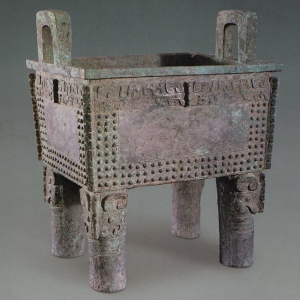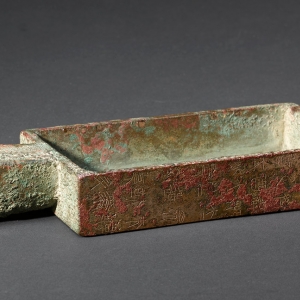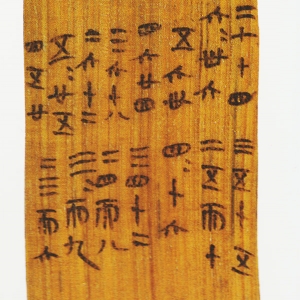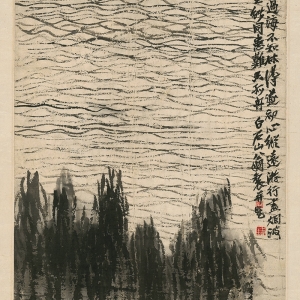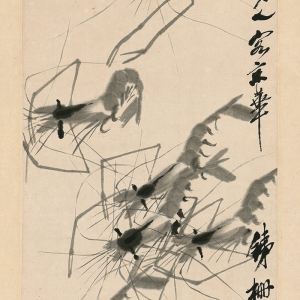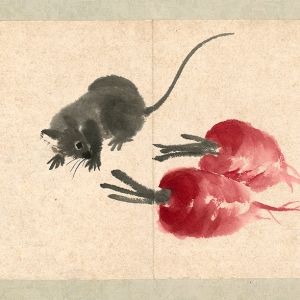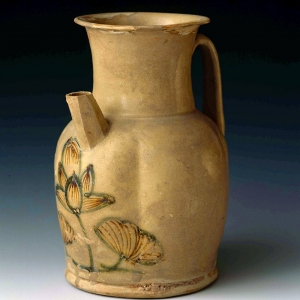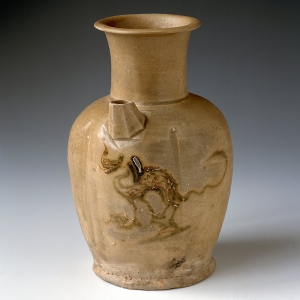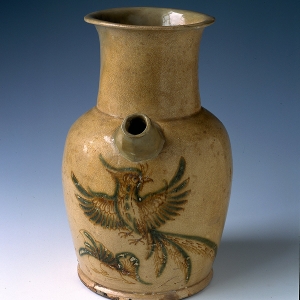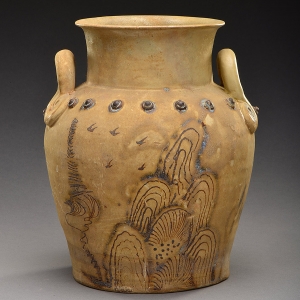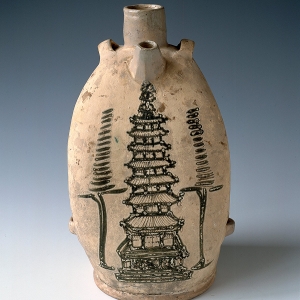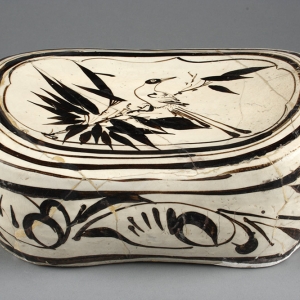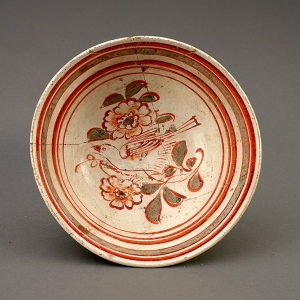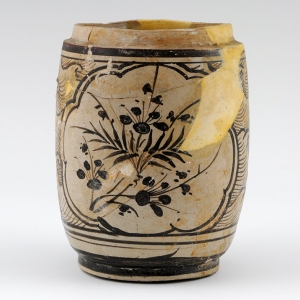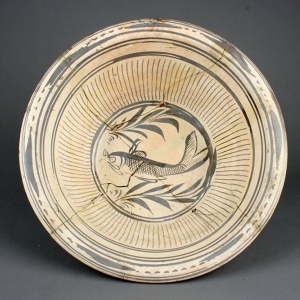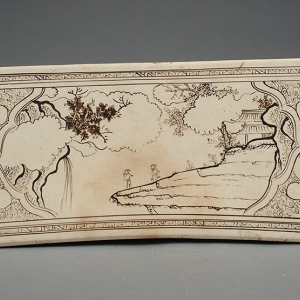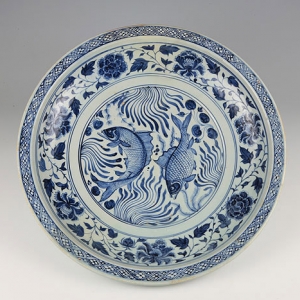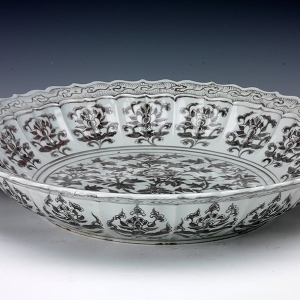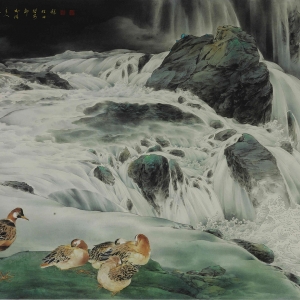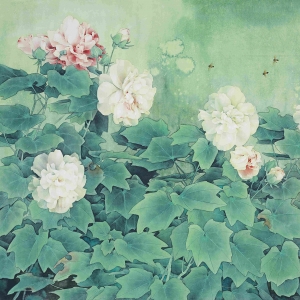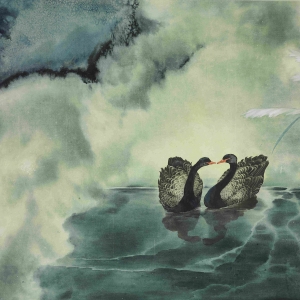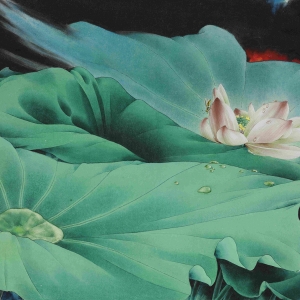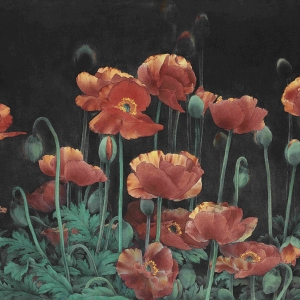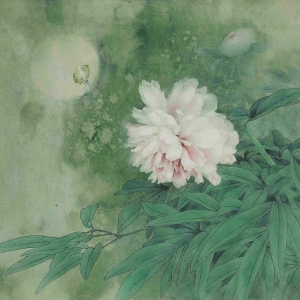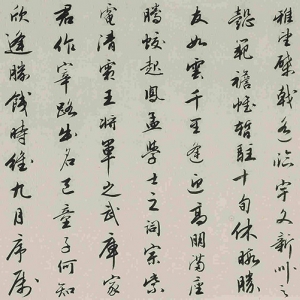馆内

展览介绍
Root and Soul - Exhibition of Chinese Civilization
Chinese civilization, profound and long-lasting, has been recognized by people all over the world. This fact is even further solidified by the boundless artifacts uncovered. Although only 30 sets of exhibits are shown in this exhibition and its selection process was constrained by many obstacles, we still have a chance to catch a glimpse of this magnificent Chinese civilization.
The development of Chinese civilization has been multi-dimensional and full of twists and turns, rather than going down a narrow path. the artifacts will be restored to its former glory as we will attempt to place it back in its own timeline. We will also seek out the artifacts’ values and positions within the society by conducting an extensive study into their origin, design and background, thus shining a light on the beauty of the civilization.
The Chinese civilization is the only civilization that is still alive and going strong. Although it lies on the Eastern pole of the Eurasian continent, blocked by an immense ocean, high mountains and an endless desert, China has never closed its door to other civilizations. There were exchanges and integrations between grassland culture and farming culture in its north and south; communication and interactions with cultures from ancient Egypt, Greece, Rome, Persia and Arab in the East and the West. In addition, There had also been an influx of colorful religions, such as Buddhism, Zoroastrianism, Nestorianism and Islam. some of foreign cultures have either faded away or assimilated into Chinese civilization. Through constant communication, trade and interaction, civilizations collide, innovate and renew. The exhibits here are witnesses of the cultural exchanges between China and the west.
History and reality are inseparable, even more so with civilizations that develops from a natural, primitive state. These artifacts may seem to have no connection with the current China. Actually, it is inextricably tied up with our modern life. It affects our way of thinking and many other aspects. It is in our blood. It is the “root” and “soul” of our culture. “Even now, it is the powerful spiritual strength that promotes reform, opening-up and the socialist modernization movement”.
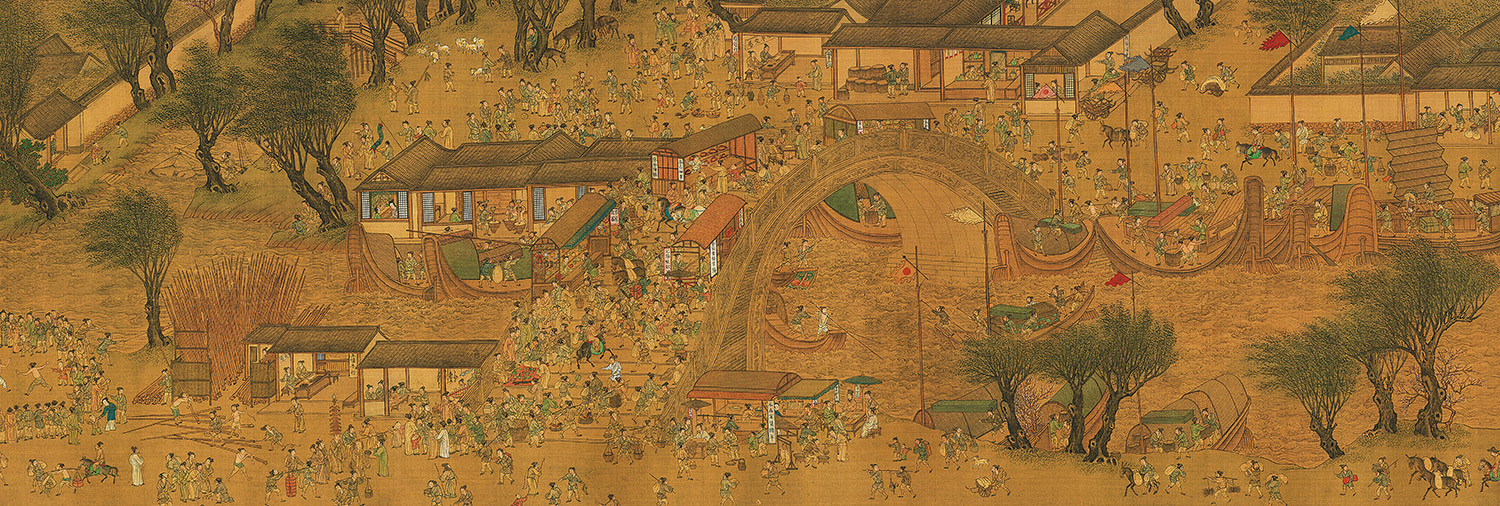
展品欣赏

展览介绍
楚骚回响——刘一原水墨艺术展
刘一原的现代水墨艺术创作起始于20世纪80年代。他近半个世纪以“心象”、“点线”、“感时” 为关键词的现代水墨艺术实践,为中国画坛提供了一系列意味深长的当代水墨叙事。刘一原立足本土生存体验,运用中国传统绘画“澄怀味道”、“以形媚道”的水墨艺术方式,以悟对和反省的姿态面对当今之生活世界。他1980年代至本世纪初的作品,沿用宋、元以来中国传统绘画“因心造境”、“以手运心”的创作方法,发挥笔墨的书写性特质,将一种悲天悯人的情怀融入到形象和笔墨之中,表达人在“现代性”之后所生发的诸多生存感悟,引起了广泛的共鸣。他的作品是关注中国文化当代转型问题的理论家、批评家们研究的对象。一直以来批评家们从不同角度不断揭示刘一原作品的历史感、现实性及其创作方法论特色,为中国当代水墨的艺术实践开拓了新的起点。
本次展览以“楚骚回响”为主题,意在重点展示刘一原近十年来艺术创作精神内涵的升华与艺术语言方式的微妙变化。展出的35件作品中有25件创作于2009年之后。在这批作品中艺术家对传统文化之探索、研究的触角由宋、元绘画转向了更为古老的距今2000余年的楚文化。前期作品中的悲悯情怀转化为对诗性与诗意的探求,是与楚骚、楚韵传统的对接,也是“山水以形媚道”(宗炳)的现代版,更是精神上的超越与升华。此展作品《重生》、《雄楚之音》之强烈色彩对比所表达的精神诉求;《汨罗怀想》、《天河》、《时光之迹》等作品中飞扬流动的线条所承载的诗性内涵,无不是楚艺术崇尚生命运动与活力,向往自由的文化精神所引发的回响。湖南、湖北皆为楚文化之故地,有着丰厚的楚文化传统和楚艺术资源,相信《楚骚回响》刘一原水墨艺术展在湖南省博物馆的展出,对于弘扬楚文化富于想象,充满生命激情,发扬踔厉的民族气质和文化精神,激励中国本土现当代艺术的创造,定会产生积极的推动作用和文化影响。

展品欣赏
- 楚雄之音
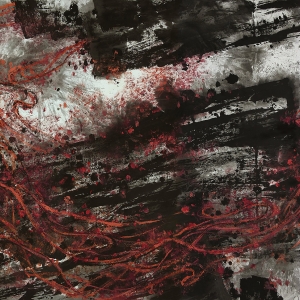
- 天河
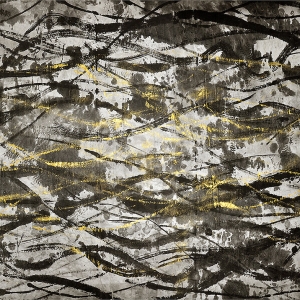
- 时光之迹
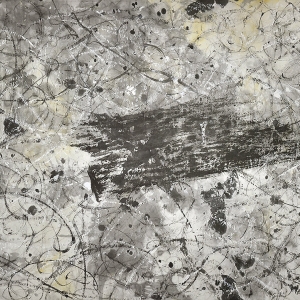
- 重生
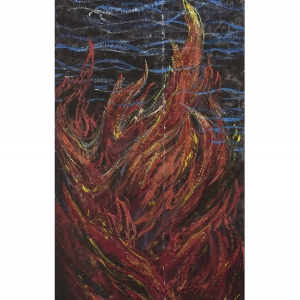
- 情结之一
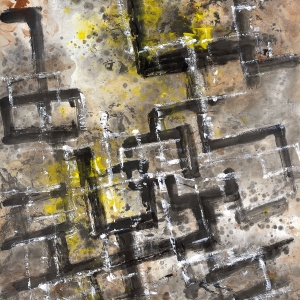
- 情结之二
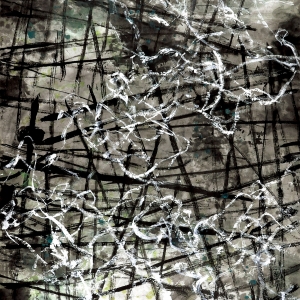
- 归
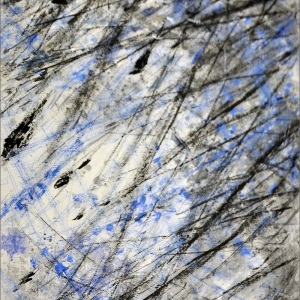
- 冰花雪月

- 仰啸
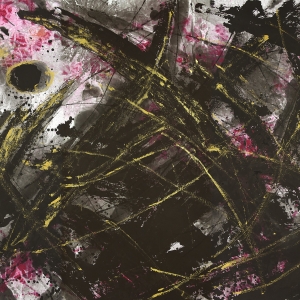
- 秋山红叶
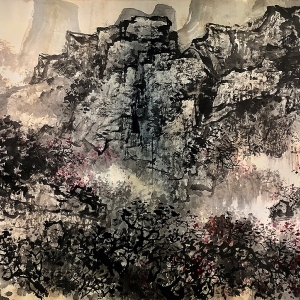
- 远古之门
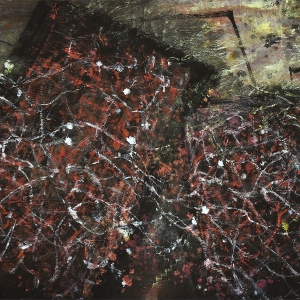
- 乐舞查看更多
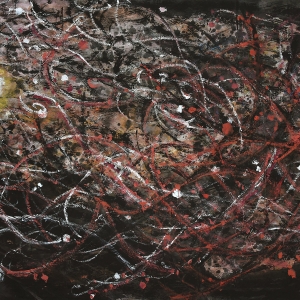
艺术家介绍

湖北美术学院中国画系教授,武汉市文史研究馆馆员。1942年7月生于武汉市。17岁即以绘制中国古代绘画为职业。1979年考取湖北美术学院中国画专业研究生,毕业后留校执教山水画和花鸟画。现潜心致力于现当代水墨的创作与研究。
1992年4月法国卡斯特尔(CASTRES)市政府出资邀请赴法举办画展和讲学
1998年10月北京国际艺苑美术馆举办“心象风景——刘一原水墨艺术展”
2003年4月湖北美术学院美术馆举办“刘一原心象水墨展”
2008年10月中国美术馆举办“刘一原心象风景展”
2010年11月武汉美术馆举办“水墨伸延——刘一原作品展”
2012年3月上海美术馆举办“一原心象——刘一原现代水墨艺术展”
2012年9月北京今日美术馆举办“感时心象——刘一原现代水墨艺术展”
2013年12月湖北省博物馆举办“笔走风云——刘一原山水花鸟作品回望展”
2015年3月厦门美术馆举办“心象之春——刘一原水墨艺术展”
2017年3月广州美术学院大学城美术馆举办“心象宇一一刘一原水墨艺术展”
2017年6月意大利·罗马Roma Spazio Arte Make Make举办“生命之痕——刘一原水墨艺术展”
2018年4月北京锦都艺术中心“承重与启明——刘一原水墨艺术展”

展览介绍
Exhibition of Guqin Culture in Hunan
Guqin originally known as qin, also called a seven-stringed plucked qin and yaoqin, is one of the most ancient instruments of Chinese nation. In ancient times, it was highly praised by literati as the first of the four arts of qin, chess, calligraphy and painting. In November 2003, UNESCO declared it the "representative of oral and intangible heritage of humanity".
Hunan is blessed with a long history of guqin. Shun, a chief of ancient Chinese tribal alliance, played the guqin, intoning “Nanfeng” to rein the country. Guo Mian, a musician in the Southern Song Dynasty, once moved to Hengshan Mountain and composed a song named “Mist and Clouds over Xiao-Xiang River”, which was admired by people for thousands of years. Sages as Zhu Xi, Zhang Shi, Wang Fuzhi and Zuo Zongtang spread feudal code of ethics and purified their souls by qin, adding profound cultural connotation to guqin culture in Hunna. Modern musicians, such as Peng Zhiqing, Yang Zongji, Gu Meigeng, Zha Fuxi and Li Jing were all engaged in guqin study in Hunan, which had a great impact in this field.
Hunan Museum has a collection of fifty-three pieces of guqin, which were unearthed or manufactured during the time from Western Han Dynasty to Republic of China, spanning more than two thousand years. These rich heritages are undoubtedly an important part of Chinese guqin culture.
“Those who play the guqin by the Xiangjiang River have good moral standards as ancient sages.” In the moonlight of Lushan Mountain and the ripple of Xiangjiang river, guqin melody is in harmony with the heaven and the earth, echoing with the universe. It is hoped that the exhibition can provide an opportunity for people from all walks of life to understand the culture of Xiaoxiang guqin and appreciate its unique charm.

展品欣赏
- 马王堆七弦琴
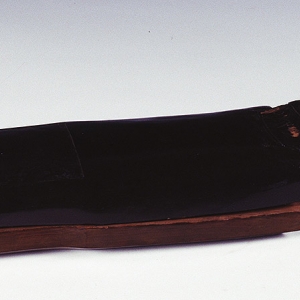
- 独幽琴
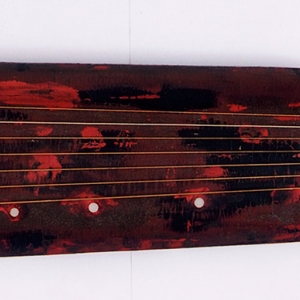
- 飞泉琴
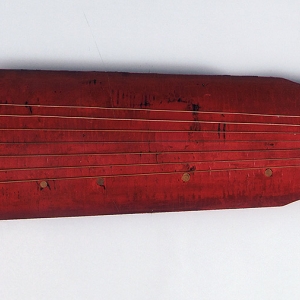
- 寒泉漱石琴
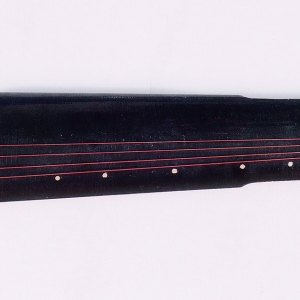
- 昭陵精—子题琴
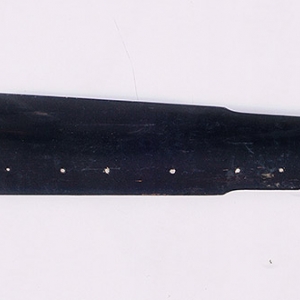
- 万壑松风琴
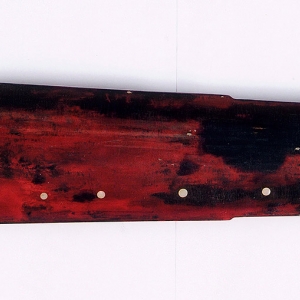
-

- 鹤鸣秋月琴
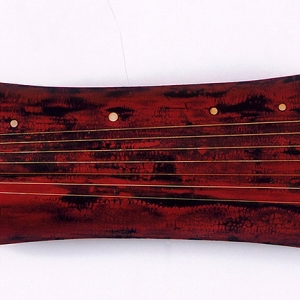
- 朝阳鸣凤琴
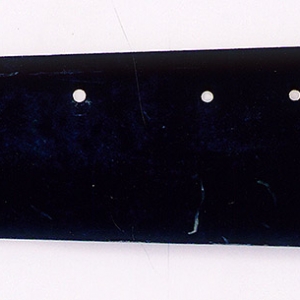
- 祝公望琴
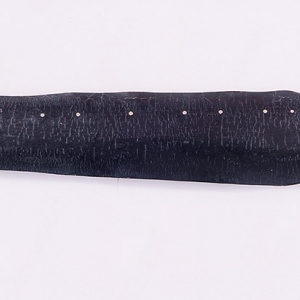
- 写心琴

- 炎陵文梓琴查看更多
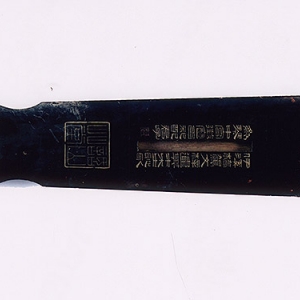

展览介绍
Exhibition of Qi Baishi’s Art
Qi Baishi (1864-1957), was formerly known as chunzhi, whose courtesy name was Weiqing, and pseudonym Lanting. Later he renamed himself Huang, with pseudonyms of Binsheng and Baishi, aliases of The Old Man in Xingziwu. The owner of Jieshanyin Study and The rich man of lithographic printings, etc. He was born in a poor peasant family in Baishipu Xingziwu, Xiangtan County, Hunan Province. When he was young, he worked as a carpenter. At the age of 20, he began to learn from the Jieziyuan Painting Collection and study painting by himself. After the age of 50, he resolutely carried out the “Artistic reform at his old age” and initiated a new style of freehand flower and bird painting of “safflower ink leaves” , which demonstrates the zeitgeist of Chinese art with a new look. Since then, he became the most famous, creative and influential Chinese painting master in the 20th century. Moreover, his influence has spread all over the world and won international prestige such as “International Peace Prize” and “World Top Ten Cultural Celebrities” successively.
Qi Baishi experienced the three periods in his life: the late Qing Dynasty, the Republic of China and New China. His legendary experience from a carpenter to the master of painting has always been admired by people. With unique talents, diligence, and the longevity, Qi made great success in painting. However, Qi also has a unique quality that he is very confident in his own art. This kind of enterprise and perseverance in born makes him always keep an unpretentious and pure heart, dare to adhere to his artistic personality, and maintain the artist’s freedom, independence and creativity all his life, which turns him into a great artist. Therefore, when Chen Shizeng persuaded him with “Draw my own painting, why should I be like others”, which was just in line with the wishes of Qi, he agreed and accepted it. Thus, the artistic path of “Draw my own painting” across his whole life was established.
Qi was good at poems, writings, paintings and seals, and especially the achievements of painting is the most representative. It not only promoted the development of literati painting, but also disseminated the profound and unpopular Chinese painting art to the public. In the exhibition, nearly 100 pieces of paintings were selected from the collection of Qi Baishi's works, including flowers, birds, landscapes and figures, covering his early, middle and late paintings. It is hoped that the audience can understand the evolution of Qi Baishi’s painting style and immerse into his maverick and charming art world.

展品欣赏
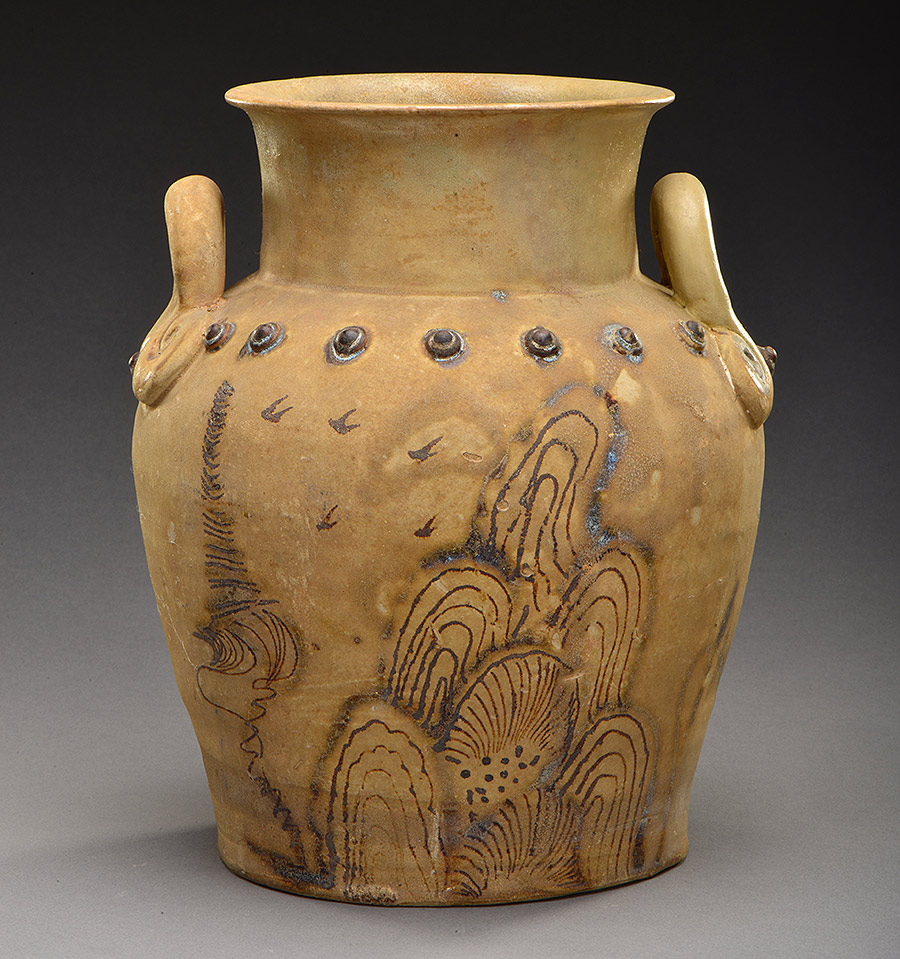
展览介绍
Porcelain Paintings from the Changsha Kiln to the Liling Kiln
The brown colored porcelains with paintings found in the Nanjing area of the Three Kingdoms period were the earliest porcelains decorated with paintings we have found till now. The painting themes on these porcelains mostly included immortals with wings and auspicious beasts which might be related to local beliefs and funeral customs. However, these special porcelain paintings were lost in the Western Jin Dynasty, and there was no porcelain with painting decorations for the next few hundred years.
Porcelain painting reached its first peak until the Changsha Kiln of the Tang Dynasty. The paintings on the porcelains from the Changsha Kiln were mainly themed on flowers and birds, together with other elements including landscapes, figures, buildings, and clouds. It is the first time in the Chinese porcelain history that brown, green and red colors were used to paint on the porcelain, marking that porcelain painting had entered into a colorful era.
The royal aristocrats of the Song Dynasty still favored the porcelains without decorations, while paintings decorations were popular elements used by the folk kilns, of which the Cizhou kiln in the northern China and the Jizhou kiln in the southern China stood out. The painting skills from the most part of China were spread to and converged in Jingdezhen (a city in Jiangxi Province, a leading porcelain-manufacturing centre) until the Yuan Dynasty, resulting in the birth of amazing blue-and-white porcelains of Yuan Dynasty.
The Ming and Qing Dynasties were the heyday of the development of painted porcelains. In addition to inheriting the previous painting skills, new varieties such as contrasting color, multicolor, pastel, enamel, light-reddish-purple art, under-glazed multicolor emerged one after another, and the paintings themed on flowers, birds, figures, and landscape were becoming more and more exquisite. The paintings on porcelains from royal kilns were precise and rigorous, while those were free and easy in folk kilns.
Porcelains become vivid with the decoration of paintings, and paintings are given immortal life because of porcelains.
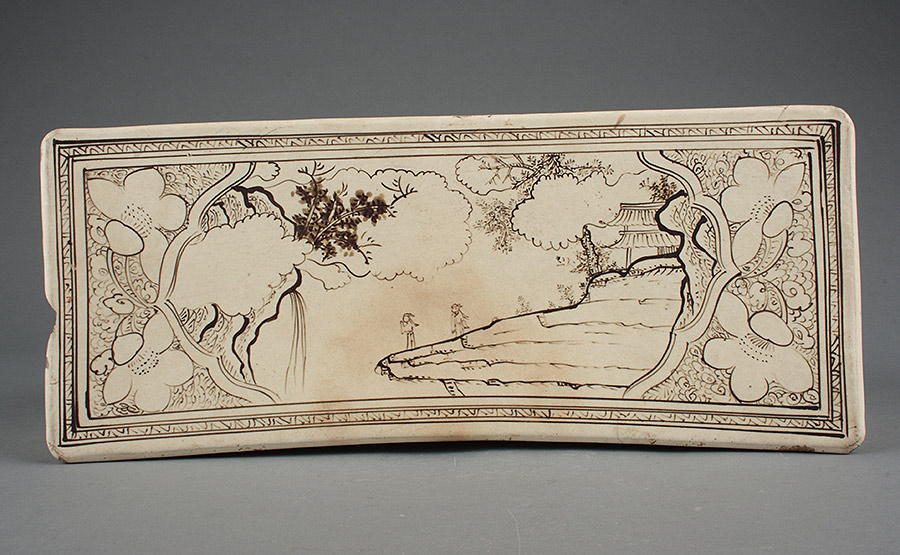
展品欣赏

展览介绍
根•魂——中华文明物语展
中华文明历史悠久,博大精深,已为人类所共识。支撑这一结论的依据,便有浩如烟海的“实证”。本展从“实物”角度,观照中华文明历史长河,尽管仅30件套展品,只是太仓一粟,遴选时又受诸多条件限制及策展人学识局限,或不具代表性,然亦可窥“文明”之一斑。
中华文明进程,呈多向度、多维度展开,而非单线延展。本展便将展品还原时空坐标中,做多向度梳理其发展脉络,查找其在各个坐标体系中所在位置,在此基础上进行多方位解读,以此呈现文明的绚丽多彩。
中华文明是世上唯一未曾中断的古老文明。中国虽处亚欧大陆东极,有无际海洋、高山屋脊、无垠沙漠阻隔,但发展却非封闭式,南北有草原文化与农耕文化的交流与融合,东西有与古埃及、古希腊罗马、波斯、阿拉伯文化的交流与互动,宗教有佛教、拜火教、景教、伊斯兰教等相继传入。外来文化,或消失无踪,或逐渐“华化”……文明中在不断的交流中碰撞,在融合中创新。不少展品便是中西文化交流的见证。
历史与现实是无法割裂的,从原生态发展起来的文明尤为如此,这些文物与今天似无关联。实际上,与当下仍有千丝万缕的联系,影响我们的思维方式……已渗入我们的血脉,是文化的“根和魂”,“今天依然是我们推进改革开放和社会主义现代化建设的强大精神力量”。

展品欣赏

展览介绍
激逸响于湘江兮——潇湘古琴文化展
“古琴”原名“琴”,又称“七弦琴”、“瑶琴”等, 是中华民族历史最为久远的乐器之一。在古代备受文人推崇,为“琴、棋、书、画”四艺之首。二〇〇三年十一月被联合国教科文组织宣布为“人类口述和非物质遗产代表作”。
湘楚大地作为古琴的故乡,其琴风琴事可谓是源远流长。舜作古琴,歌《南风》而天下治。南宋琴家郭沔曾移居衡山谱写《潇湘水云》,千百年来以为美谈。朱熹、张栻、王夫之、左宗棠等贤哲传扬礼教、以琴治心,为潇湘古琴增添了深厚的文化内涵。彭祉卿、杨宗稷、顾梅羹、查阜西、李静等近现代琴家都曾在湖南从事琴学活动,在古琴界产生了巨大影响。
湖南省博物馆收藏有五十三张古琴,其出土或斫制年代自西汉至民国,前后延续两千余年,这些丰富的遗产无疑是中国古琴文化中的重要组成部分。
“激逸响于湘江兮,堪比德于遗老”,在麓山的明月中,在湘水的余波里,琴声与天地合一,与万物同奏。希望本次展览能为各界人士开启一扇了解潇湘古琴文化的窗口,感受潇湘琴韵的独特魅力。

展品欣赏
- 马王堆七弦琴

- 独幽琴

- 飞泉琴

- 寒泉漱石琴

- 昭陵精—子题琴

- 万壑松风琴

-

- 鹤鸣秋月琴

- 朝阳鸣凤琴

- 祝公望琴

- 写心琴

- 炎陵文梓琴查看更多


展览介绍
瓷之画——从长沙窑到醴陵窑
瓷器上出现绘画装饰,目前发现最早为三国时期南京地区的褐彩瓷绘,题材多为羽人、瑞兽,应与当地信仰和葬俗有关。这种特殊瓷画到西晋就消失了,以后的几百年瓷器上没有绘画装饰。
直到唐代长沙窑,瓷器绘画出现了第一个高峰。长沙窑绘画的题材以花鸟为主,也有少量山水、人物、建筑、云气等。长沙窑首次运用褐、绿、红三彩作画,标志着瓷器绘画进入了多彩时代。
宋代宫廷贵族仍然崇尚素瓷,瓷器绘画装饰以民间窑场为主,北方磁州窑和南方吉州窑是最优秀的代表。迨至元代,南北的绘画技艺汇聚景德镇,使之出现了令人惊艳的元青花。
明清时期是彩绘瓷器发展的鼎盛时期。除继承前代的绘画技艺外,斗彩、五彩、粉彩、珐琅彩、浅绛彩、釉下五彩等新品种层出不穷,花鸟、人物、山水绘画技艺越发精湛。官窑绘画规矩严谨,民窑绘画随性洒脱。
瓷因画而灵动,画因瓷而不朽。

展品欣赏

展览介绍
画吾自画——馆藏齐白石绘画作品展
齐白石(1864—1957),原名纯芝,字渭清,又号兰亭,后更名为璜,号濒生、白石,别署杏子坞老民、借山吟馆主者、三百石印富翁等。他出生于湖南湘潭县白石铺杏子坞贫寒农家,早年以木匠为业,20岁始以《芥子园画谱》自学绘画,50多岁后还毅然进行 “衰年变法”,开创了“红花墨叶”的大写意花鸟画风格,以全新面貌表现了中国艺术的时代精神,成为20世纪最负盛名、最具创作力和影响力的中国画大师。齐白石的影响还超出国界,先后获得了“国际和平奖金”与“世界十大文化名人”等国际声誉。
齐白石一生经历了清末、民国和新中国三个时期,其从木匠到大师的传奇经历一直为人们孜孜探寻。齐白石天赋过人、勤奋刻苦,以及远超常人的高寿,都是他成功的重要因素。然而,齐白石身上还有一种独特的品质,那就是他对于自己的艺术十分自信,这种骨子里的进取与倔强,让他始终怀有一颗率真质朴的赤子之心,敢于坚持自己的艺术个性,一生都保持着艺术家的自由、独立与创造力,这更是他成为一个伟大艺术家的根本原因。所以,当陈师曾以“画吾自画自合古,何必低首求同群”之语相劝时,齐白石因其正合己意而欣然接受,由此确立了其一生“画吾自画”的艺术道路。
齐白石诗、书、画、印四绝,而尤以绘画艺术成就最高并最具代表性,它不但拓展了文人画发展的新空间,而且把“阳春白雪”的中国画艺术推向大众。本次展览从馆藏齐白石作品中遴选出绘画精品近百件,包括花鸟、山水、人物诸画种,亦涵盖其早、中、晚各个时期,希望观众能由此了解齐白石绘画风格的演变脉络,感受齐白石特立独行而充满魅力的艺术世界。

展品欣赏

展览介绍
颜家龙邹传安先生捐赠书画作品展
湘楚之地,钟灵毓秀,既出敢为人先之爱国志士,亦多勤于创作、甘于奉献的艺术大家,远如“獐猿圣手”易元吉,近如“人民艺术家”齐白石。湖南省博物馆经过多年的努力,建立了颇具特色的湘籍名人及艺术家作品收藏体系,其中不少重要藏品来源于收藏家及艺术家的捐赠行为。
2013年,湘籍著名工笔花鸟画家邹传安先生将自己799件作品捐赠给湖南省博物馆,2014年湘籍著名书法家颜家龙先生的家属邓元珍女士及子女颜方方、颜正正遵照先生遗志,向湖南省博物馆捐赠代表性书画作品64件。几年来,湖南省博物馆完成了这些作品的整理、入藏、研究、保护等工作。本展从两位先生捐赠的书画作品中,精选出颜家龙先生的书法作品43幅、邹传安先生的书画作品63幅。这些作品不仅代表了他们的个人艺术成就,也成为时代艺术的高峰,折射出20世纪后半叶至21世纪初的湖南现当代书画艺术的面貌。
对于非营利性永久机构的博物馆而言,社会捐赠不仅有助于丰富其收藏体系,而且将不断地拓展博物馆的边界,促进博物馆事业的快速发展。因此,我馆特举办本次捐赠作品展,以褒扬两位先生及家属的义举。同时,希望观众能够感受到他们各具特色的艺术魅力,汇聚社会力量,共同推进建设“共有、共建、共享”的博物馆。

艺术家介绍

颜家龙(1928—2012),湖南省涟源人,当代书法家、美术教育家。曾任湖南日报社美术组长、湖南师范大学美术学院教授、中国书法家协会理事、湖南省书法家协会主席、中国美术家协会会员。
颜家龙先生自幼酷爱文艺,师从叔祖父颜昌饶学习书法。中学期间,受教于周达。在中央大学及尔后在浙江美术学院进修期间,曾受傅抱石、潘天寿等名师指导。他的楷、行、草诸体都能形成自己独特的面貌,大字力能扛鼎,小字精致有韵,因常年研习汉魏名碑和李邕《麓山寺碑》,诸体皆有隶意,线条厚重,富有拙趣。作品曾参加全国第一、三、五、六、七届书法篆刻作品展等。出版有《颜家龙书法集》、《得德楼文稿》等。
颜家龙先生作为湖南省书协的创始人和主要组织者,20多年不辞辛劳,为提高湖湘书坛的艺术水平、提升湖南书家在全国的影响力等方面做出了卓越贡献。
邹传安,字书靖,斋号知止,1940年生,湖南省新化县水车镇人,中国美术家协会会员,湖南省文史研究馆馆员,湖南师范大学美术学院客座教授,一级美术师。退休前供职于湖南省娄底地区文联,任文联名誉主席、美协主席、娄底画院院长。他自幼习画,长期致力于工笔花鸟画的研究与创作,功力深厚,艺术语言丰富。他独创大面积泼彩与工笔画结合的形式,使工致的物象与元气淋漓的背景完美吻合,开拓了工笔花鸟画的新境界。出版物有《工笔花鸟画技法》、《孤灯夜品录》、《大泽萤荧》、《唐风宋韵——邹传安作品集》、《天籁——邹传安工笔花鸟画》等绘画和文字作品二十余部,作品为湖南省博物馆、中国美术馆、广州美术学院等国内外知名机构收藏。




